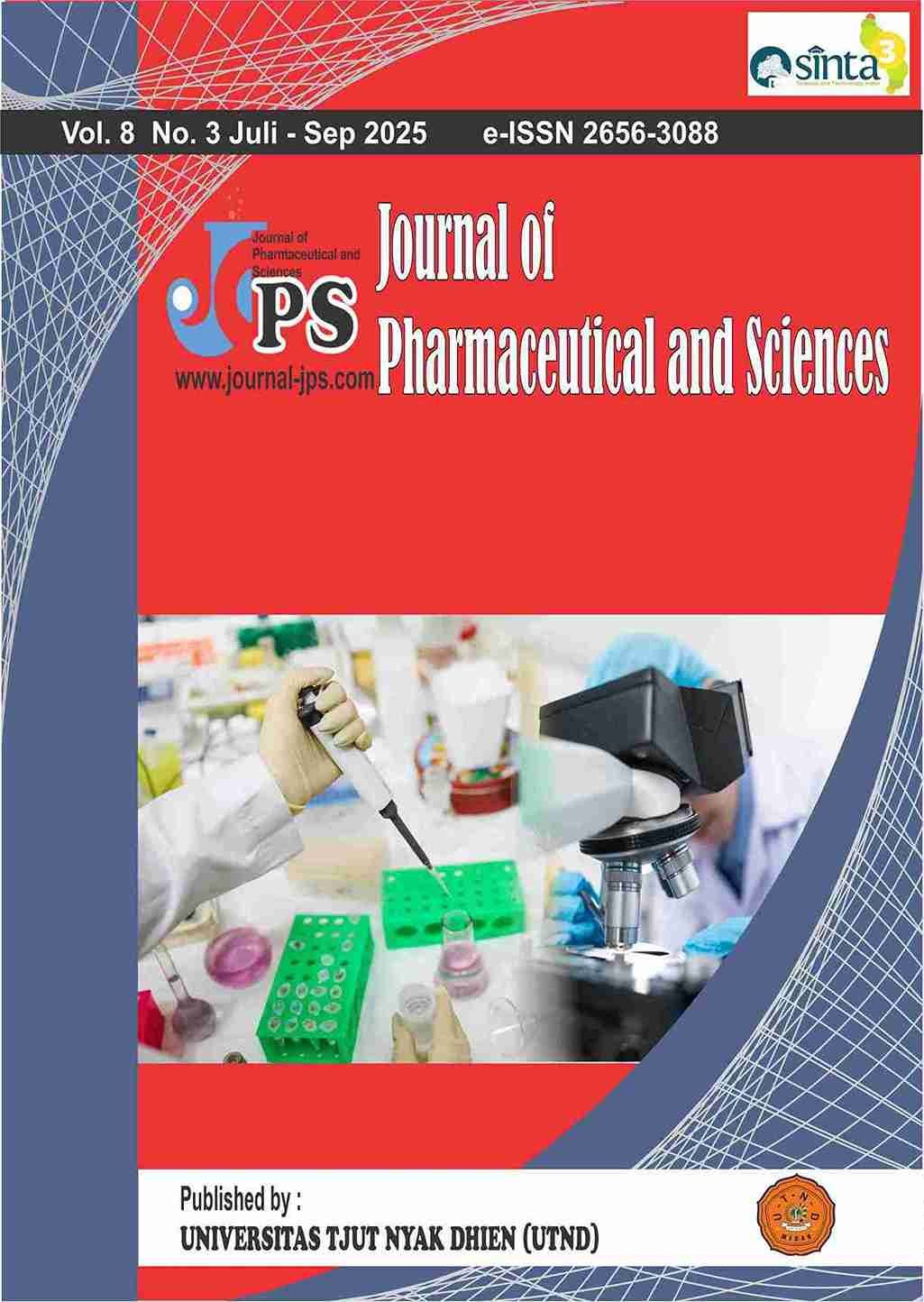Risk Factors for Stunting in Toddlers in the Mogang Community Health Center Work Area, Palipi District, Samosir Regency in 2024
Main Article Content
Page: 2182-2197
Abstract
Background: Based on the 2023 Indonesian Health Survey (SKI) in Samosir Regency, the prevalence of stunting was 22.4%, with Palipi District recording the highest rate. As of August 2024, the incidence of stunting in Palipi District reached 14.34% (182 toddlers). Although there has been a decline, stunting remains a priority program in Samosir Regency. Objective: This study aims to analyze the risk factors associated with the incidence of stunting among toddlers in the working area of Mogang Public Health Center, Palipi District. Method: This research employed a quantitative design with a cross-sectional approach conducted in the working area of Mogang Public Health Center in 2024. The study sample consisted of 93 mothers with toddlers, selected using accidental sampling techniques. Data were analyzed using univariate, bivariate (Chi-Square test), and multivariate (logistic regression) analyses. Results: The bivariate analysis revealed significant relationships between maternal nutritional status (p=0.000), parenting pattern (p=0.000), maternal education level (p=0.000), family income level (p=0.002), and household sanitation conditions (p=0.000) with the incidence of stunting. However, multivariate analysis identified only three dominant and independent variables: maternal education level (p=0.014; Exp(B)=26.410), parenting pattern (p=0.001), and household sanitation condition (p=0.023). Conclusion: Maternal education level, parenting pattern, and household sanitation are proven to be the dominant factors influencing stunting. Mothers with low education levels are 26 times more likely to have stunted children. Preventive efforts should prioritize interventions targeting these three factors through focused health education programs.
Downloads
Article Details

This work is licensed under a Creative Commons Attribution-NonCommercial-ShareAlike 4.0 International License.
References
World Health Organization. Stunting in a nutshell. World Health Organization 2025. https://www.who.int/news/item/19-11-2015-stunting-in-a-nutshell.
Black RE, Victora CG, Walker SP, Bhutta ZA, Christian P, De Onis M, et al. Maternal and child undernutrition and overweight in low-income and middle-income countries. The Lancet 2013;382:427–51. DOI: https://doi.org/10.1016/S0140-6736(13)60937-X
Kemenkes. Survei Kesehatan Indonesia. Jakarta: 2023.
RI K. Situasi Balita Pendek, Data dan Informasi Kementrian Kesehatan RI. ACM SIGAPL APL Quote Quad 2016.
Badan Pusat Statistik Kabupaten Samosir. Statistik Daerah Kabupaten Samosir 2023. vol. 17. Samosir: 1385.
Bhutta ZA, Das JK, Rizvi A, Gaffey MF, Walker N, Horton S, et al. Evidence-based interventions for improvement of maternal and child nutrition: what can be done and at what cost? The Lancet 2013;382:452–77. DOI: https://doi.org/10.1016/S0140-6736(13)60996-4
Bhutta ZA, Salam RA. Global nutrition epidemiology and trends. Ann Nutr Metab 2013;61:19–27. DOI: https://doi.org/10.1159/000345167
Pratiwi RD, Aulia G, Oktora AS, Prasetyo A, Savira A, Nurmila S. Edukasi Tentang Pentingnya Nutrisi Ibu Hamil. Jam: Jurnal Abdi Masyarakat 2021;2:101–5.
Pratiwi R, Sari RS, Ratnasari F. Dampak status gizi pendek (stunting) terhadap prestasi belajar: A literature review. Jurnal Ilmiah Ilmu Keperawatan 2021;12:10–23. DOI: https://doi.org/10.36089/nu.v12i2.317
Baker M, Halliday V, Williams RN, Bowrey DJ. A systematic review of the nutritional consequences of esophagectomy. Clinical Nutrition 2016;35:987–94. DOI: https://doi.org/10.1016/j.clnu.2015.08.010
Anggraeni N, Handayani OWK. Pola Asuh dan Pelayanan Kesehatan pada Masa Pandemi terhadap Kejadian Stunting Balita di Kabupaten Kendal. Indonesian Journal of Public Health and Nutrition 2021;1:673–8.
Pradana VN, Suparmi S, Ratnawati R. Personal Hygiene, Water Availability, and Environmental Sanitation with the Incidence of Stunting in Toddlers Aged 6–59 Months in the Working Area of the Singorojo I Public Health Center, Kendal Regency. Amerta Nutrition 2023;7:421–6. https://doi.org/10.20473/amnt.v7i3.2023.421-426. DOI: https://doi.org/10.20473/amnt.v7i3.2023.421-426
Yuliana R, Saputra W. Impact of responsive parenting on stunting prevention among children in urban areas of Indonesia. Asian Journal of Child Health 2023;17:60–8.
Rachmawati Widyaningrum SG, Rosyida Awalia S, Dyah Suryani SS. Modul Edukasi Pencegahan Stunting Dengan Pemenuhan Gizi Pada 1000 Hari Pertama Kehidupan. Penerbit K-Media; n.d.
Ruwiah R, Harleli H, Sabilu Y, Fithria F, Sueratman NE. Peran pendidikan gizi dalam pencegahan stunting. Jurnal Ilmiah Kesehatan 2021;14:151–8. DOI: https://doi.org/10.48144/jiks.v14i2.417
Hastuti EA, Suryani S, Sriati A. Masalah Psikososial Ibu Dengan Anak Stunted: Studi Deskriptif Kualitatif. Jurnal Keperawatan’Aisyiyah 2022;9:173–86. DOI: https://doi.org/10.33867/jka.v9i2.352





